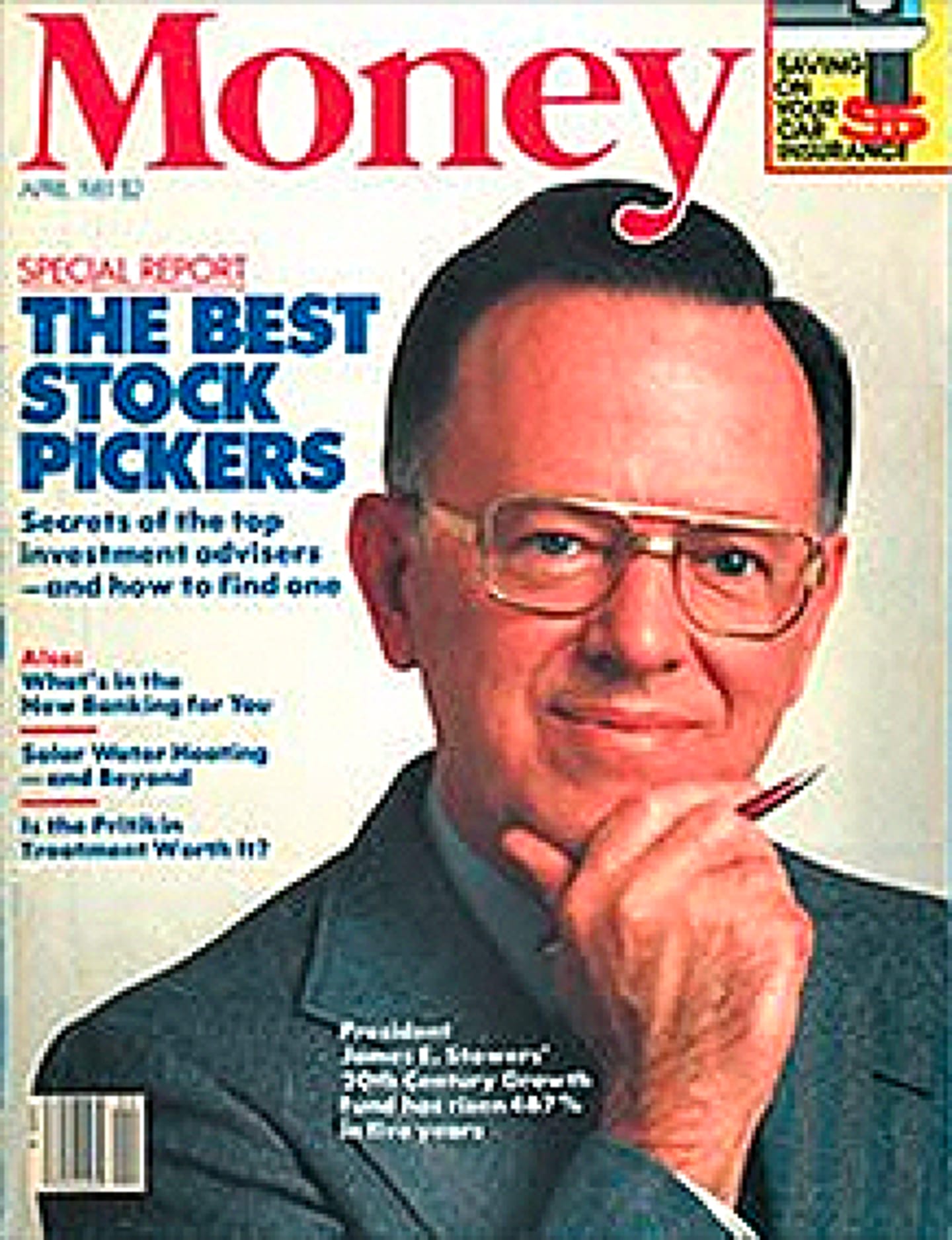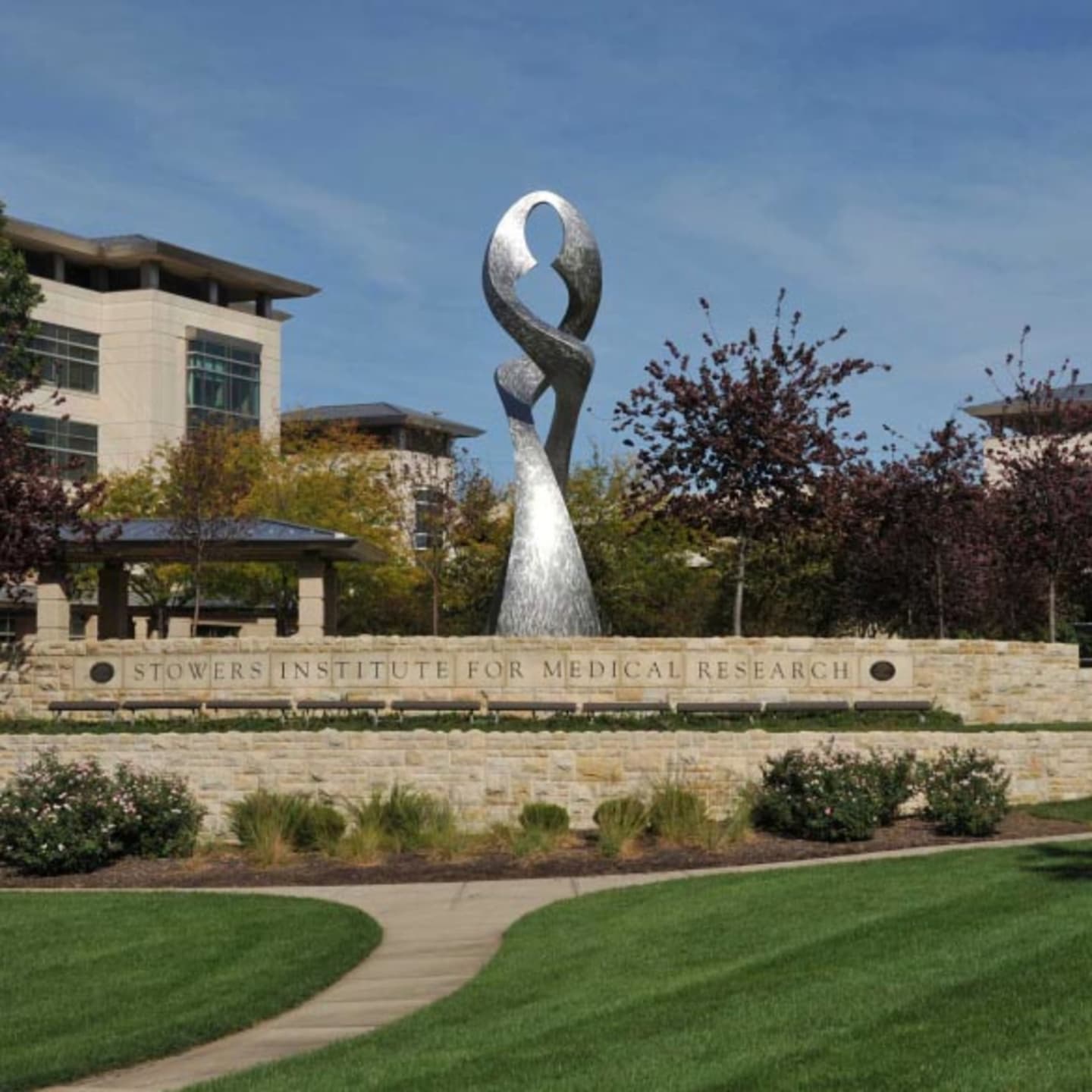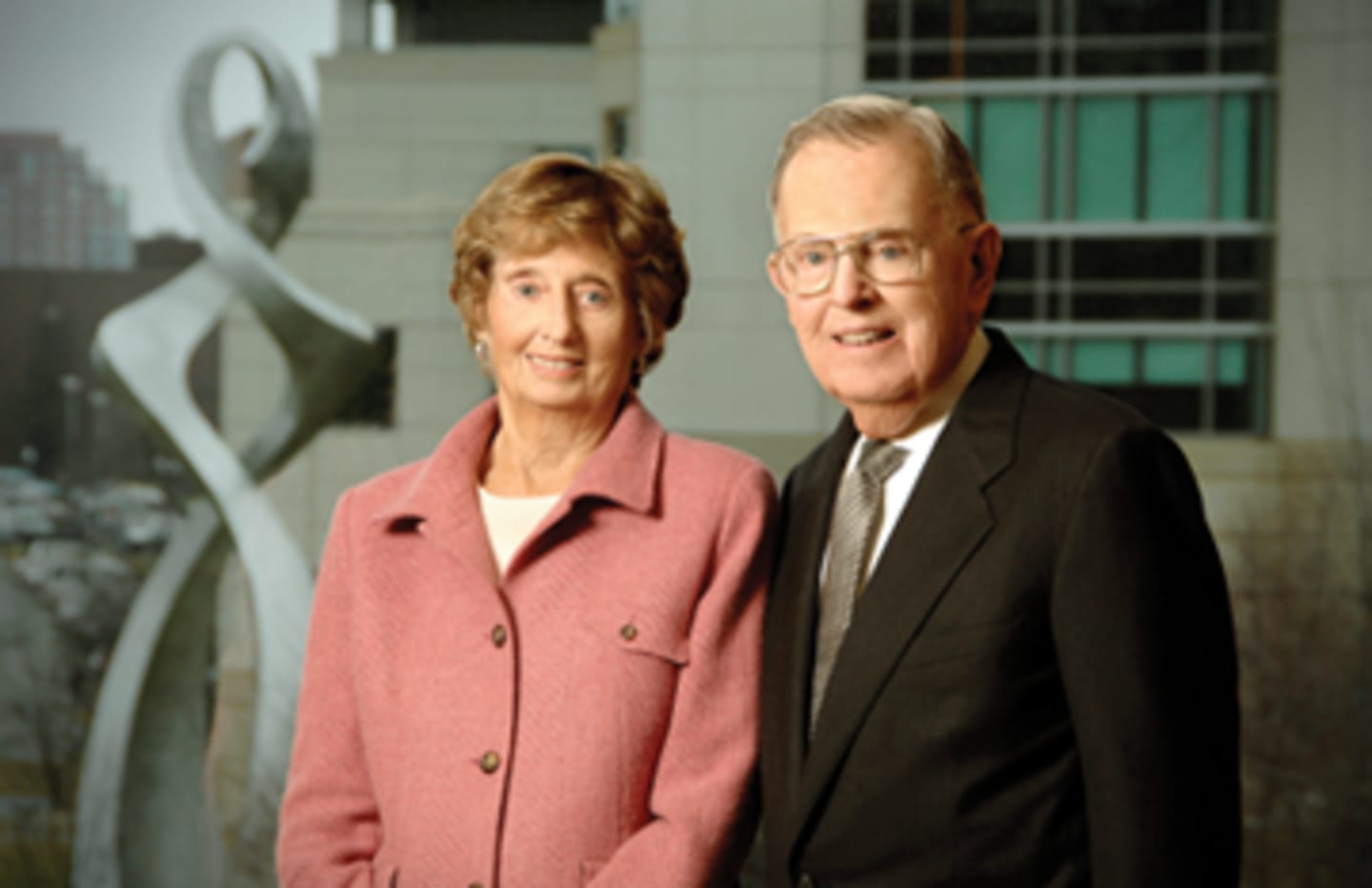
Jim Stowers
Founder, American Century Investments® 1924-2014
The son and grandson of doctors, James Evans Stowers Jr. was born on Jan. 10, 1924 in Kansas City, Mo. A life-long Missouri resident, Stowers spent his formative years immersed in the Midwestern values and culture that would later serve him well in his various professional and philanthropic pursuits. It was at the historic Kemper Military School in Boonville, Mo. that Stowers learned about discipline, organization and leadership. After graduating from the University of Missouri, he joined the Army Air Corps where he became a fighter pilot. Upon his return to civilian life in 1945, he enlisted in the Air Force Reserves and served as a captain until resigning his commission in 1957.
Given his family's background in medicine, Stowers initially considered a career as a doctor. But, after completing three years of course work to become a doctor, Stowers put his medical career on hold and set his sights on the business world. After a stint selling mutual funds for Kansas-based Waddell & Reed, he founded a term-life insurance firm—J.E. Stowers and Company—and in 1958, the money management firm Twentieth Century (later to become American Century Investments).
Success In Asset Management
Relying on $100,000 in seed money from 24 investors and initially offering only two mutual funds, today Stowers' company is a global asset management firm serving financial intermediaries, individual and institutional investors from offices in Kansas City, New York, Mountain View, Calif., London and Hong Kong.
In reflecting on the origins and success of his company, Stowers once wrote, "From the start of our company, we had a dream. That dream was to try to offer people only the best products and services—second to none." In addition, Stowers wrote, "It was my belief that if we helped make people successful, they would in turn make us successful."
1950 - 1960s
Early in Stowers' investment management career, he embraced a concept that would serve as the basic investment philosophy behind many of the portfolios initially offered by his money management firm.
Stowers believed "money follows earnings," meaning over time, investors in the equity markets would gravitate to the best companies, primarily those experiencing earnings growth. He further refined this approach by only focusing on companies whose earnings and revenues were growing at an accelerating pace.
1970 - 1980s
In the early 1970s, recognizing that computers could help streamline his stock analysis process, Stowers wrote his own proprietary computer program to identify companies with the most desirable growth characteristics. Today, the "Stowers System"—as it was referred to by the Securities and Exchange Commission—remains an integral part of the investment process guiding a number of the firm's growth-oriented investment strategies.
Throughout the 1970s and 1980s, this computer-assisted stock selection process helped Stowers generate strong performance for investors and brought newfound celebrity to the folksy Midwestern entrepreneur and innovator. In early 1981, Stowers' photo appeared on the cover of MONEY Magazine, accompanied by a feature story about the success of his funds over the previous five-year period. Other national media attention created additional public interest in Stowers and his growing investment firm.
1990s
By the early 1990s, Stowers and his company were becoming household names in investing circles. With the company's Ultra® Fund achieving an amazing 86 percent return in 1991, a second wave of national attention helped the company double its assets under management in a single year. In recalling that period, Stowers said, "The fund was going way up and people were calling. Every time you'd hang up the telephone, it would ring again and we were just being drowned in calls."
In addition, the 1990s marked the beginning of the company's move beyond its successful domestic growth investment process into other investment disciplines including fixed income, global & non-U.S. equity, value equity, asset allocation and quantitative equity. Also, the firm began to look beyond the retail marketplace to financial intermediaries and institutional asset management.

Cancer Touches the Stowers Family
Just as Stowers was beginning to enjoy the fruits of his many years of hard work, his family was confronted with the first in a series of battles with cancer. Jim was diagnosed and treated for prostate cancer in 1987 and his wife, Virginia, had surgery for breast cancer in 1993.
Motivated by their experience with the disease, Jim and Virginia founded the Stowers Institute for Medical Research in 1994. In an unparalleled act of generosity, they created a $2 billion endowment for the Institute, comprised of cash gifts and a more than 40 percent equity ownership stake in American Century Investments.
In describing his reason for starting the Institute, Jim Stowers said, "My wife and I wanted to give back something more valuable than money to the millions of people who made our success possible, and we think that through science is the best way we can do it."
My wife and I wanted to give back something more valuable than money to the millions of people who made our success possible...
After the completion of principal construction in 2000, the Institute welcomed its first research teams to the 10-acre, 600,000 square-foot state-of-the-art facility. Today, the Institute houses 22 independent research programs and three technology development programs. Of the nearly 550 Institute members, 350 are scientific staff: principal investigators, technology center directors, postdoctoral research associates and fellows, pre-doctoral research associates, and technical support staff all focused on conducting foundational research on the fundamental processes of cellular life.
As Stowers became a septuagenarian, a point when many dream of retirement, he continued his crusade to help others improve their financial positions. He shared his investing insights and tips for financial self-sufficiency in the well-received book: Yes, You Can... Achieve Financial Independence. This book, and others by Stowers, inspired the creation of the Yes, You Can financial education program, which was designed to help parents and educators influence the behaviors of children and young adults so they could establish a path toward financial independence.

Recognized Philanthropy
Early in the new millennium, Stowers was chosen to be an honorary torch bearer for the 2002 Salt Lake City Winter Olympic Games as the flame made its trek through Kansas City. Broadcast on the NBC Nightly News, Stowers' torch run once again propelled the humble philanthropist and businessman onto the national stage. Perhaps the NBC reporter captured the essence of Stowers best when he described him as a man who's given a "gold-medal performance in the generosity competition.
The honor of carrying the torch was followed by Stowers being named Ernst & Young's 2005 Entrepreneur of the Year in the Financial Services Category. In his acceptance speech for the prestigious award, Stowers said, "With both American Century and the Institute, the goal was never about self enrichment. Rather, the larger goal has been to improve the lives of others, either by helping them achieve financial independence or by conducting medical research into the causes and potential cures for devastating gene-based diseases."
With both American Century and the Institute, the goal was never about self enrichment. Rather, the larger goal has been to improve the lives of others...
In 2010, Jim and Virginia Stowers joined other philanthropists in signing the "Giving Pledge." The brainchild of billionaires Warren Buffet and Bill and Melinda Gates, the pledge called on signatories to give away more than 50 percent of their wealth to charity during their life or at death. Of course, in the case of Mr. and Mrs. Stowers, the majority of their wealth had already been transferred to the endowment for the Stowers Institute.
In 2011, on the one-year anniversary of the Giving Pledge, Forbes Magazine named Jim and Virginia to its list of the "Biggest Givers"—those who have donated at least $1 billion to charities or foundations. Ranked 9th on the list, Jim and Virginia were praised by Forbes for their generosity, with the magazine noting that as a percentage of their total net worth, they had pledged the most.
At a special tribute in early 2014 to mark Jim Stowers' 90th birthday, Investigator and Dean of the Graduate School of the Stowers Institute for Medical Research, R. Scott Hawley, Ph. D., reflected on the enormity of what Jim and Virginia Stowers accomplished through the creation of both American Century and the Stowers Institute.
"There are so very few people who are courageous enough to have really gigantic dreams," said Hawley. "And there are even fewer people who find a way to make those dreams come true. But the rarest are those who stay with it long enough to see how those dreams blossom and actually become so much more than anyone could imagine. And when I thought about that, I realized, they've done it twice!"
